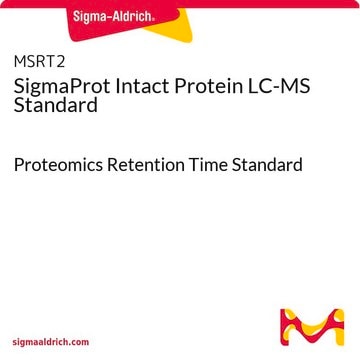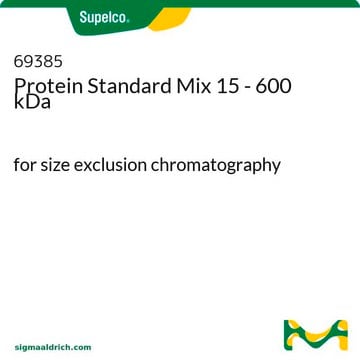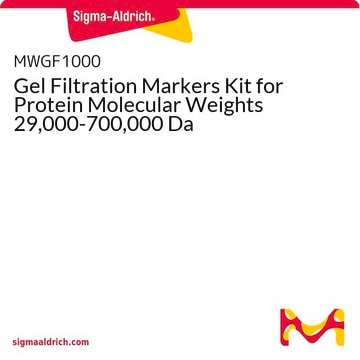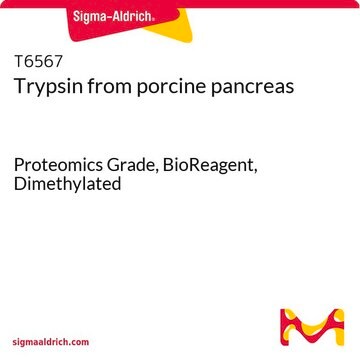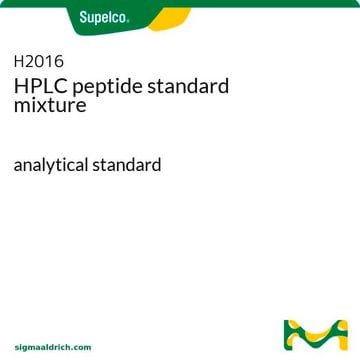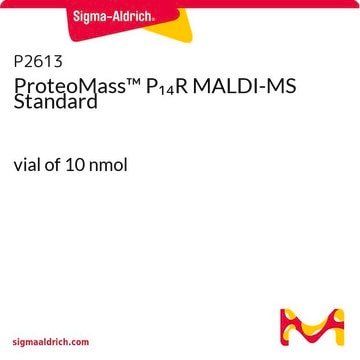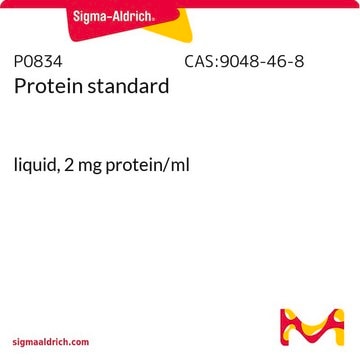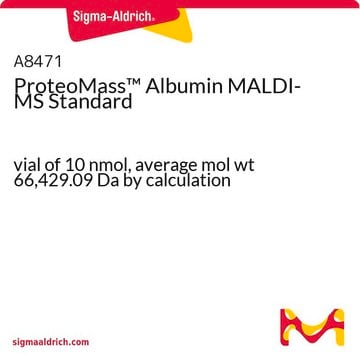The UPS FASTA file is accessible from the link below:
https://www.sigmaaldrich.com/US/en/technical-documents/technical-article/protein-biology/protein-mass-spectrometry/ups1-and-ups2-proteomic
UPS2
Proteomics Dynamic Range Standard Set
Protein Mass Spectrometry Calibration Standard
Synonyme(s) :
Dynamic Range Standards, Proteomics Standard Set
Sélectionner une taille de conditionnement
Sélectionner une taille de conditionnement
About This Item
Produits recommandés
Source biologique
human
Niveau de qualité
Forme
ready-to-use solution
Qualité
Protein Mass Spectrometry Calibration Standard
Concentration
10.6 μg/ampule protein
Technique(s)
mass spectrometry (MS): suitable
Conditions d'expédition
wet ice
Température de stockage
−20°C
Catégories apparentées
Description générale
Application
Proteomics Dynamic Range Standard Set has been used for the quantification of dynamic range universal protein standard on Orbitrap Analyzer using all ion fragmentation.[4] It has been used as a standard for intensity-based absolute quantification of proteins (iBAQ) in LC-MS (liquid chromatography-mass spectrometry)/MS analysis.[5][1]
Composants de kit également disponibles séparément
- T6567Trypsin from porcine pancreas, Proteomics Grade, BioReagent, Dimethylated 20 μgFDS
Produit(s) apparenté(s)
Mention d'avertissement
Danger
Mentions de danger
Conseils de prudence
Classification des risques
Eye Dam. 1 - Repr. 1B - Resp. Sens. 1 - Skin Irrit. 2 - STOT SE 3
Organes cibles
Respiratory system
Code de la classe de stockage
6.1C - Combustible acute toxic Cat.3 / toxic compounds or compounds which causing chronic effects
Point d'éclair (°F)
Not applicable
Point d'éclair (°C)
Not applicable
Faites votre choix parmi les versions les plus récentes :
Certificats d'analyse (COA)
Vous ne trouvez pas la bonne version ?
Si vous avez besoin d'une version particulière, vous pouvez rechercher un certificat spécifique par le numéro de lot.
Déjà en possession de ce produit ?
Retrouvez la documentation relative aux produits que vous avez récemment achetés dans la Bibliothèque de documents.
Les clients ont également consulté
Articles
High-throughput proteomics advances with improved analysis methods and mass spectrometry.
Contenu apparenté
Standardize research with Universal and Dynamic Proteomics Standards, complex and well-characterized reference standards for mass spectrometry.
-
Regarding SKU# UPS2, can you please send me FASTA file of 48 proteins in UPS2 product? thanks you
1 answer-
Helpful?
-
Active Filters
Notre équipe de scientifiques dispose d'une expérience dans tous les secteurs de la recherche, notamment en sciences de la vie, science des matériaux, synthèse chimique, chromatographie, analyse et dans de nombreux autres domaines..
Contacter notre Service technique

